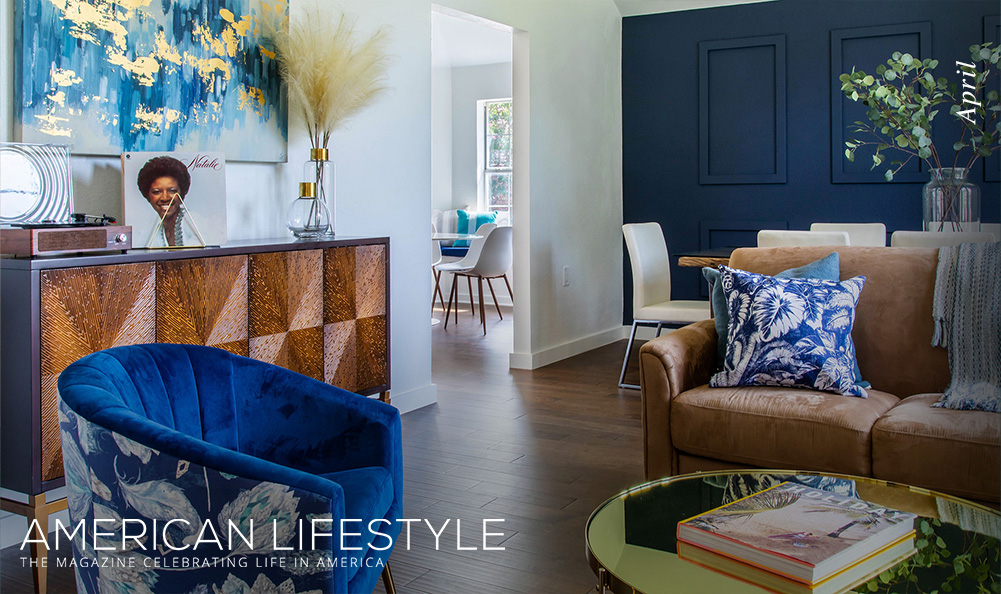in this issue

- MICKI ESPOSITO
-
digitalMAG@iammicki.comemail

 +
+

 +
+

 +
+

After much anticipation, the first full month of spring is finally here. This issue of American Lifestyle is full of ideas to help you embrace the season including a fun road trip idea, two delicious gut-approved recipes, an inside look at a childhood home makeover, and tips to help you shop for secondhand home items.
Traversing along the Mississippi River, the Great River Road National Scenic Byway is the perfect avenue for a spring road trip. With more than 3,000 miles of open road, you can find beautiful sights from Minnesota all the way down to Louisiana. Be sure to read the itinerary inside for a list of must-visit locations that can satisfy any traveler.
Your gut plays an important role in your overall health and well-being, and this issue offers two simple recipes from The Gut-Loving Cookbook that can boost your fiber and make your gut happy.
Renovating a home is never an easy task, but designer Chalon Clark proves it can be done with her ambitious remodel of her childhood home. Inside you’ll learn more about her modern-funk aesthetic and inspiration for the project.
Furnishing and decorating a home often comes at a high expense. To help you save more while also finding unique pieces, consider shopping for secondhand items. The tips and tricks in this issue can help you find the perfect used pieces for you and your living spaces.
Here’s to an amazing April and bountiful spring season! As always, it’s a pleasure to send you this magazine.
 +
+

April is a fabulous time to hop in your car, roll down the windows, and tour the great United States. If you’re looking for an amazing, ready-made road trip, consider the Great River Road National Scenic Byway, which travels 3,000 miles through ten states along both sides of the Mississippi River. Recognized as an All-American Road for its nationally significant sights, the Great River Road is a collection of local, state, and federal highways that follow the river from the Midwestern state of Minnesota to Louisiana in the South.
It can take four to ten days to complete the entire journey, but you could also just explore parts of it if you prefer—it’s all up to you! Check out this itinerary of sights to see along the way.

Separated by the river and less than eight miles apart, Minneapolis and St. Paul may be Twin Cities, but they have their own personalities. You can immerse yourself in artwork from around the world at the Minneapolis Institute of Art or Minneapolis Sculpture Garden, view the fifty-three-foot Minnehaha Falls, or discover any of the city’s twenty-two lakes. These lakes are perfect for boating, swimming, and fishing, and you can also walk, hike, and bike along their shores.
In St. Paul, tour the Como Park Zoo and Conservatory, which has everything from anacondas to giraffes to lemurs. You can also explore the birthplace of The Great Gatsby author F. Scott Fitzgerald or survey the beautiful architecture of the Cathedral of St. Paul, modeled after St. Peter’s Basilica in Vatican City.
Meander through the picturesque town of La Crosse, Wisconsin, which offers a variety of shops and restaurants and expansive views from 600-foot-high Granddad Bluff, whose heights you can reach by car. While in town, visit Riverside Park at the convergence of the Mississippi, Black, and La Crosse Rivers, and take a historic trolley tour of the La Crosse region. Cap your visit with the sweet scents and beautiful flowers of the Riverside International Friendship Gardens, or book a dinner cruise on the paddle wheel boat La Crosse Queen.

Nestled at the conjunction of Iowa, Wisconsin, and Illinois, Dubuque is Iowa’s oldest city and is awash with many cultural offerings. You can commune with bald eagles, turtles, and fish at the National Mississippi River Museum and Aquarium or gaze at the varied paintings, sculptures, and other works at the Dubuque Museum of Art. You could also stroll the Japanese, prairie, rose, wildflower, and other gardens at the Dubuque Arboretum and Botanical Garden or climb a beautiful stone tower at the century-old Eagle Point Park to view expansive vistas.
Several idyllic communities dot the shoreline of the Mississippi in Illinois. In Galena, explore the 125 downtown shops and restaurants or sample the wines at Galena Cellars Vineyard & Winery. Stop by the bustling city of Moline to see vintage agricultural equipment in the John Deere Pavilion and take in the early 1900s architecture. And before crossing the river to Missouri, tour the Cahokia Mounds in Collinsville, where a prehistoric native civilization once existed.

In St. Louis, be sure to take a tram car to the top of the sixty-three-story Gateway Arch to get a bird’s-eye view of the city. Then get your thrills at the nearby Six Flags St. Louis amusement park, or bolster your music education at the National Blues Museum. Finally, relax with a beer at Anheuser-Busch or with a slice of St. Louis-style pizza from a downtown pizzeria.
The Bluegrass State has the shortest section of the Great River Road at just sixty miles, but that doesn’t mean there’s nothing to do. Visit the Wickliffe Mounds State Historic Site to see the large earthen mounds built by American Indians more than six hundred years ago, or stop at Columbus-Belmont State Park, which is on both the Civil War Heritage Trail and the Trail of Tears National Historic Trail.

If you’re a fan of rock ’n’ roll icon Elvis Presley, Memphis is a must-see. Snap selfies with his bronze statue on Beale Street, tour where he recorded his first song at Sun Studio, and stop by Graceland to visit his personal home, stroll his gardens, and pay homage at his final resting place. In town, you can also learn about the legacy of Dr. Martin Luther King Jr. at the National Civil Rights Museum, shop in the South Main Arts District, and enjoy tasty jambalaya and BBQ while listening to live music at one of the city’s many blues clubs.
Get out of your car and walk or bike across the Mississippi River via the mile-long Big River Crossing. This attraction is the longest active pedestrian bridge in the country and stretches from Memphis, Tennessee, to West Memphis, Arkansas. You can also bike or hike the connected Big River Trail, which follows the levee along the river and offers city, water, and forest views.
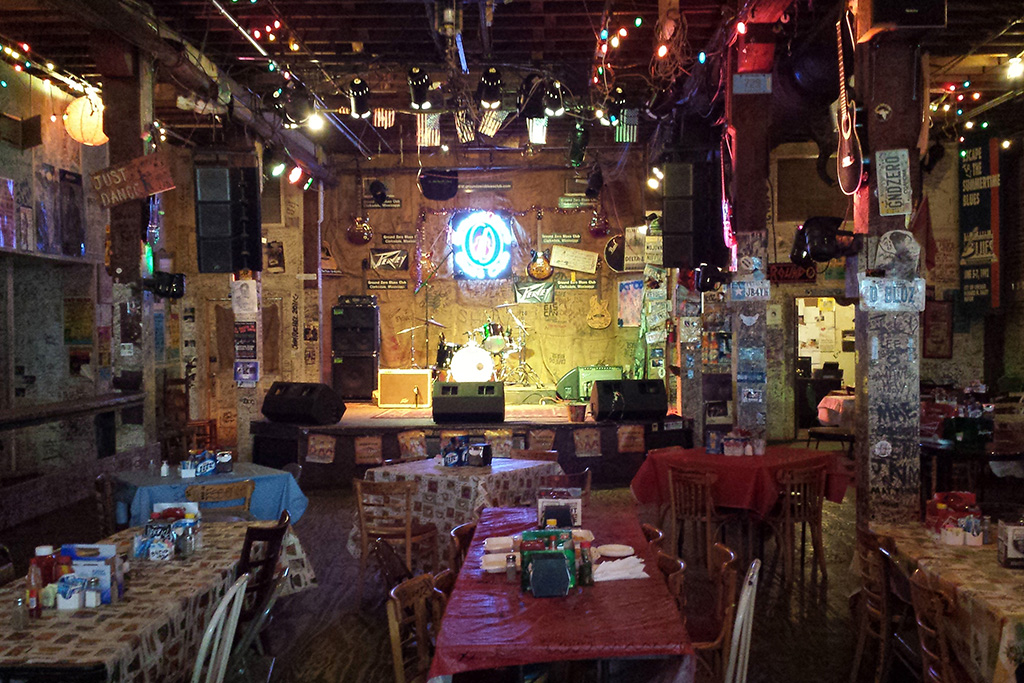
In Clarksdale, Mississippi, take a slight detour to the Delta Blues Museum to experience the history of blues music and learn more about music legend Muddy Waters. See one of his electric guitars, what remains of his sharecropping cabin, and ZZ Top’s Muddywood guitar, which was made from one of the cabin’s timbers.
The Great River Road ends in Venice, Louisiana, where the river flows into the Gulf of Mexico. As you go through the Bayou State, stop by Baton Rouge, which has numerous museums like the LSU Museum of Art and Louisiana Art & Science Museum. It’s also home to the USS Kidd, a destroyer that saw battle in both World War II and the Korean War. Finally, celebrate the completion of your road trip in New Orleans, where you can look at the architecture in the historic French Quarter, listen to live music on Bourbon Street, and delight in the city’s unique Creole food.
No matter how many miles you drive along the Great River Road, you’ll enjoy some of the best scenery, food, and culture that America has to offer.
For more information, visit experiencemississippiriver.com
 +
+

Eating well-balanced meals doesn’t have to be boring. With a variety of fiber and fermented foods in its recipes, The Gut-Loving Cookbook offers simple, delicious solutions to support a healthier digestive system.
Dinner bowls make for a quick and easy weeknight meal. This delicious interpretation brings together tofu, kimchi, and quinoa for a hearty, healthy recipe.
While cookies might not be the first thing that comes to mind when you think of gut health, this sweet dessert is a surprisingly excellent source of fiber.
Recipes excerpted from The Gut-Loving Cookbook by Alana and Lisa Macfarlane of The Gut Stuff, published by Pavilion Books. Picture credit: Haarala Hamilton.
 +
+

recipe by alana and lisa macfarlane
photos by haarala hamilton

Serves 4




 +
+

recipe by alana and lisa macfarlane
photos by haarala hamilton

Makes 6
Once cool, store in the fridge for up to 4 days.




 +
+

Interior designer Chalon Clark transformed her childhood home from an old-fashioned and serviceable dwelling to a vibrant abode imbued floor-to-ceiling with her signature “modern funk” aesthetic and her family’s rich cultural heritage.
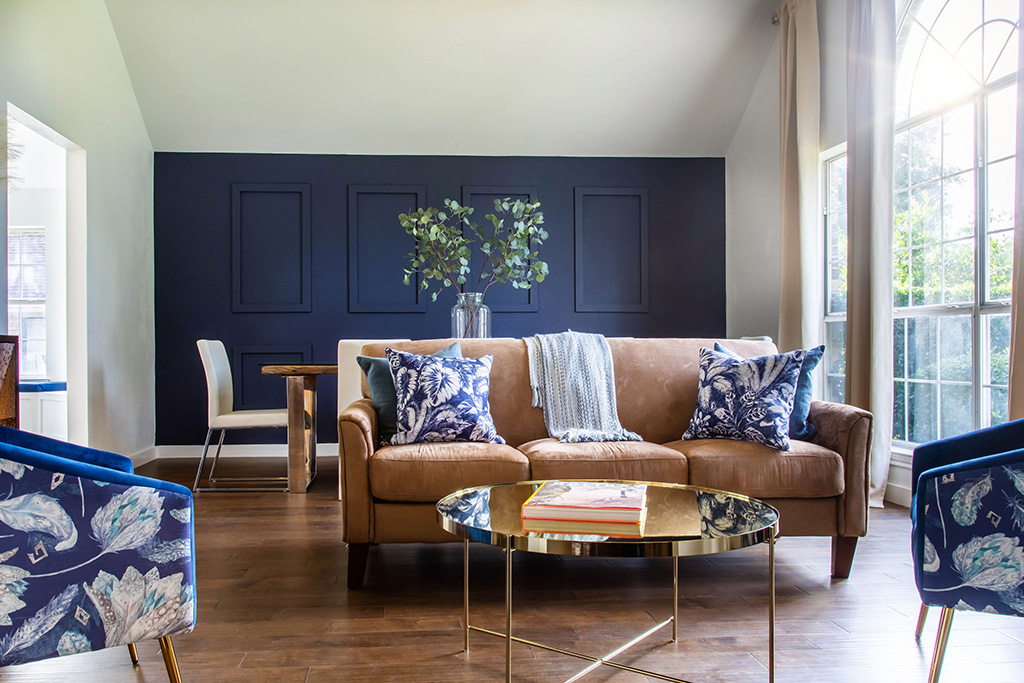
What was your experience with home design before this project?
I’m a lawyer by trade and am still practicing law as a commercial litigator, but in 2021 I reconsidered tasks on my bucket list as I started to lose loved ones and coworkers due to the pandemic. What dreams could I be leaving on the table? So I opened my design service, Your Design Redefined, and my first project was my parents’ home in Dallas, Texas. They trusted me and my husband to tear up their entire house!
My parents hadn’t updated their house since they purchased it in 1992. It still had the same pink carpet and green surfaces. What’s funny is that I made many of the existing design decisions at the tender age of ten. My mom isn’t interested in design at all, so she let me design the whole home. I guess I did well for a ten-year-old—but, thirty years later, it was not cute anymore.
What were some of the early challenges you faced when redesigning their home?
It took months to help them clear the house out because they had thirty years of stuff in there: Barbie dolls, doll cars, my sister’s old stuff, and a lot of mine. Then we gutted the place—we took out all the floors, cabinets, and bathroom fixtures. After that, my husband and I basically rebuilt the house.
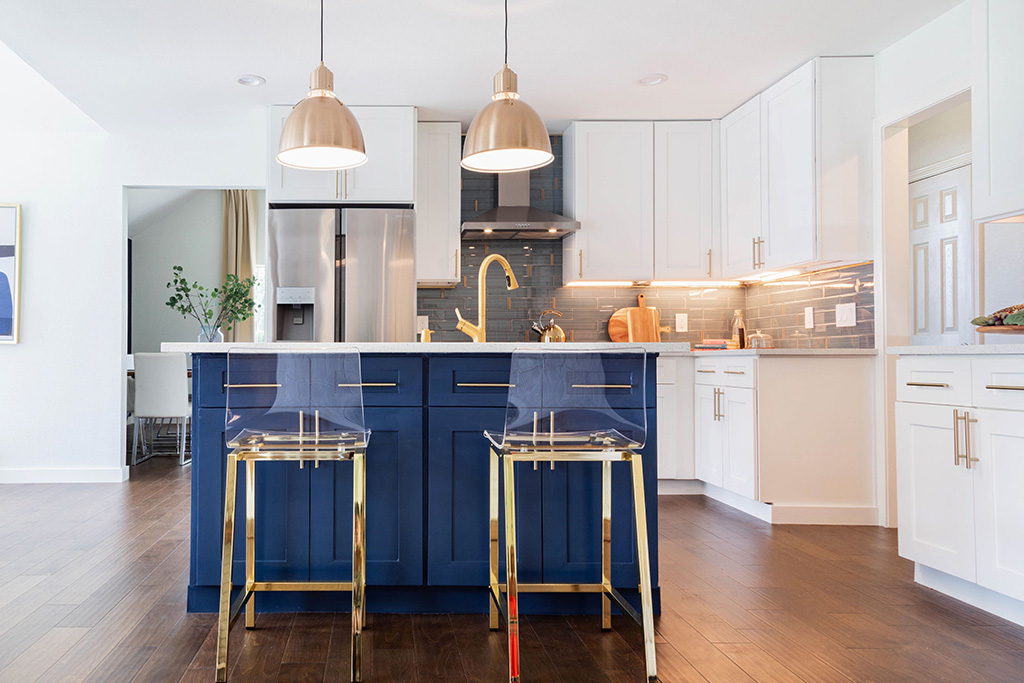
Did you change the layout of the house at all?
I didn’t care for the pass-through—a big square cutout in the wall between the kitchen and living room. We tore that wall out completely and opened up the space. That was probably the biggest transformation because that alone made the house look so much bigger.
What was your overall design concept for the renovation?
I just wanted to modernize the space. So many people have builder-grade homes, and that’s exactly what this was. Adding some custom lighting, custom floors, vibrant paint, wallpaper, and texture can turn your home from builder grade to custom level. I think a lot of people miss that part: “How do I make this mine and not like every other house on the street?”
I turned my sister’s old bedroom into my dad’s man cave. We made it dark and moody to match. I wanted to personalize the space because my father’s roots are in The Bahamas, so I had a hand-drawn map of The Bahamas custom made. It was so amazing to see his reaction. He immediately started pointing out all the different islands where our grandparents were from. I also included posters of his favorite movies and other personal touches.
I turned my old childhood bedroom into a room where my children could spend the night. I thought about what it was like to be a kid. At the time, all I ever wanted was bunk beds, so I added some while being cognizant of the space and ensuring that four grandchildren could sleep there comfortably. I also added stairs instead of a ladder and a trundle bed for my newborn nephew while also leaving room for play. Then I put my old toys back in the room, like my Barbie Dreamhouse from the ’80s, implementing them in a modern way.
I kept the room light and bright to give an illusion of space, because it’s a small room. I kept the walls white and the beds a very light gray and included small pops of color in the decor, including pictures of Black girls like my daughters studying and reaching for the stars, paired with inspiration quotes.
How do you design rooms that are both personal and elegant?
When I design for clients, I include features like streamlined furniture and restored antiques with consideration for their own background and interests. The key is to incorporate these different elements stylishly. I leaned the design for my parents’ home more transitional [balancing traditional with contemporary features] for that reason.
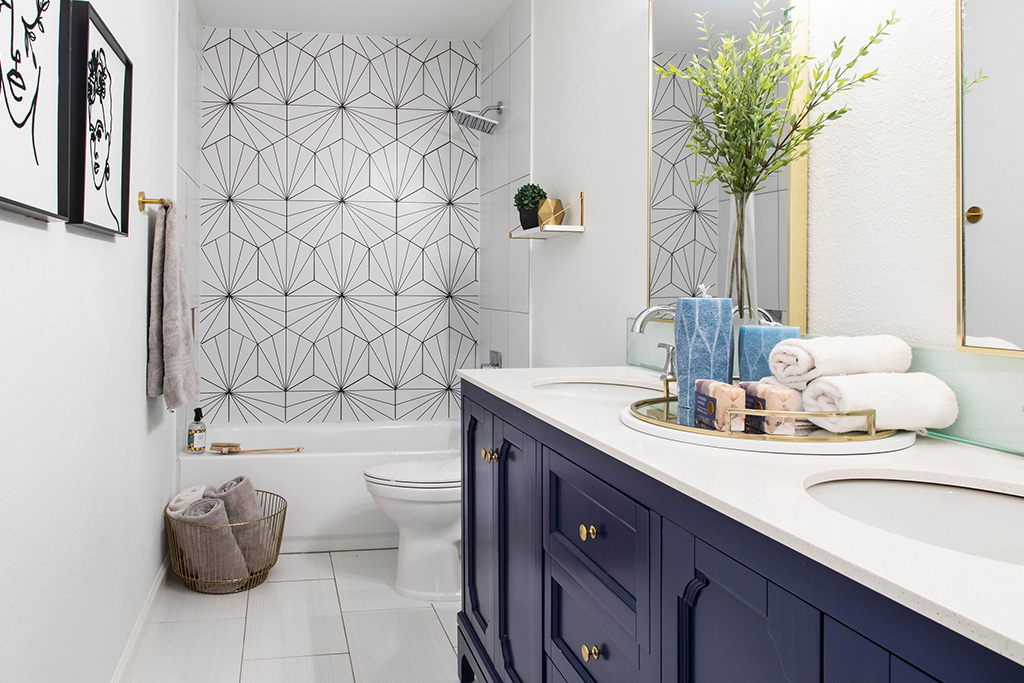
How did you incorporate your signature modern funk aesthetic into the project?
My aesthetic is all about streamlined design with clean lines and a bit of hardness, but the difference is that I am not a beige-and-white-and-light-gray person. I infuse the culture from my background into my design: I’m African American, my family comes from The Bahamas, and my husband’s family is from Jamaica.
I think something that’s often missing from home design is a person’s cultural context. I call it “culturally competent” design. You’re going to see colors, fabrics, and textures in my designs that mean something, such as cultural clocks or African juju hats with an understanding of where they came from.
I think minorities are often excluded from the design industry because there is nothing that is really calling to them. Nobody is really serving them. But culture is just as important to design as being stylish.
What can people with diverse backgrounds do to implement culturally competent design in their homes?
Add in some accents of cultural pieces. For instance, pair an heirloom sofa with something modern, like Z Gallerie pillows. Think of it as salt on your food: just a sprinkle here and there.
Also, add your personality. Don’t just go buy things because of what’s on trend. Designing without personality leads to a home where you don’t feel represented and don’t value the things you have. It leads to a place that is not a sanctuary for you.
How did your parents feel about the results?
It was so nice to see their reaction at the end of the project. We documented the whole process of revealing their new home, and it felt so good to give back to my parents some part of what they had given me. They especially loved the dining room, which has beautiful vaulted ceilings. My parents had always intended to put a chandelier in there, but then piano lessons, new cars, and all these other expenses came up. Thirty years later, they never had their chandelier. So to be able to hang their first chandelier in there and see the dining room reach its full potential—that’s the first time I shed a tear.
Can you share some of your upcoming projects?
I’m in the beginning stages of designing a product line for a company called BT Furnishings. I love chaise lounges, so I may be working on a leaner, more modern take on these pieces for them but with my own touches of funk—like a pop of a colorful pattern.
Also, my husband and I purchased a 1940s villa in Jamaica that we are completely renovating. It will be called the Island Spot Villa under the Island Spot brand, which is named for our Jamaican restaurants here in Dallas. We hope to open it to guests in fall of this year.
For more information, visit YourDesignRedefined.com or follow @TheIslandSpotVillas4669 on YouTube
 +
+

One of the joys of moving into a new home, whether it’s a condo, house, or apartment, is getting to furnish and design your living spaces. You have a blank canvas that you can decorate any way you want. However, this can often come at a high expense. If you’re looking for a budget-friendly and sustainable way to find pieces for your home, try looking for used items instead of buying new. It may take a little longer to find the perfect pieces, but if you use these tips, shopping secondhand will be a breeze.
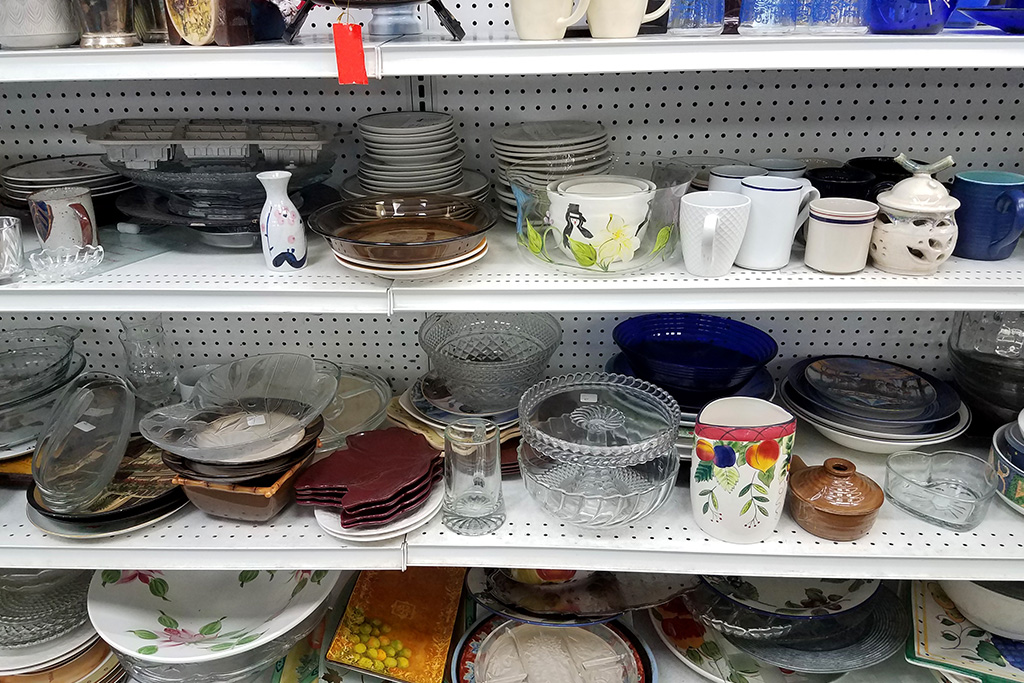
Unsurprisingly, shopping for secondhand items can quickly become overwhelming due to how many options are out there. Between thrift stores, Facebook Marketplace, estate sales, and antique malls, there are often a lot of items to sort through and choose between. Before you start shopping, take inventory of what items you need for your home so you have a general idea of what to shop for. For online shopping, begin with specific search terms like “couch,” “dresser,” “rug,” or “coffee table.” This will narrow the field and help you better assess what’s available to purchase in your area. For thrift stores and antique malls, you can stick to the home goods sections—if the store is divided into categories—or simply walk the aisles with specific items in mind.
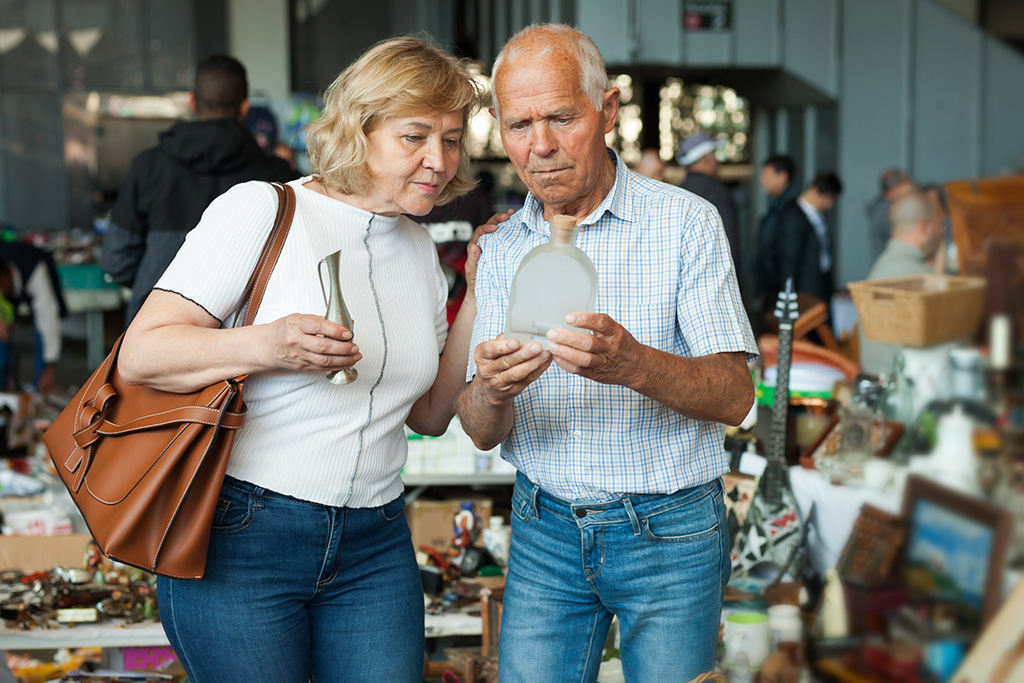
When shopping for used goods online, you should try to get as many details as you can before purchasing an item. After all, it’s hard to know the true condition of a couch or if a table would fit in your dining room through only a few pictures. Don’t hesitate to ask for more information on the item beyond the listing description, including extra pictures to get a better idea of the object’s details, such as color or fabric. If you plan on shopping in person, be sure to measure the space you’re trying to fill and take a tape measure with you to the store. This way you’ll be able to check the dimensions of any item to make sure it will fit.
You’ll also want to closely check items for any damage. While it’s common for used goods to have some wear and tear from everyday use, things like a loose drawer, a broken seat back, or a torn rug corner can cause more problems than they’re often worth. When you have the option, you should look at an item in person before you buy it. This will give you the chance to ensure that it’s not only the right color, size, and look that you’re after but also in a condition that works for you. That said, there are also a lot of ways to upcycle old items to give them new life; you can always re-cover seat cushions or add a fresh coat of paint to a table or dresser, for example. So if you like the bare bones of an item, get creative and make it into a perfect piece for your home.
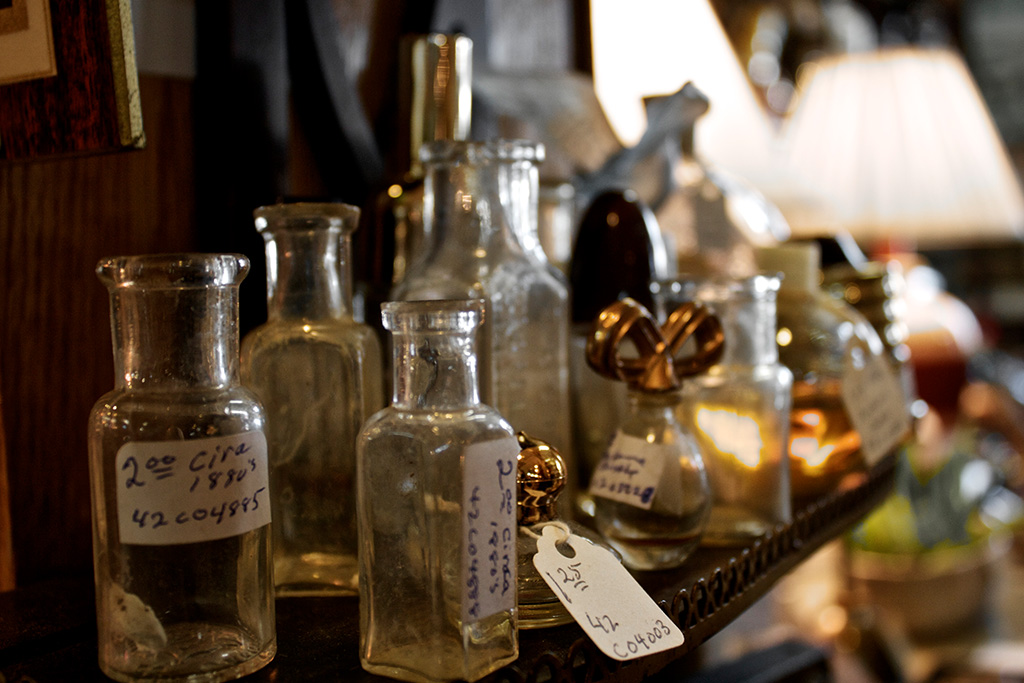
While shopping secondhand is more environmentally friendly, part of the appeal comes from getting good deals on things you need; you don’t want to wind up paying more for the secondhand item than you would if you bought it new. Before you say yes to an item, do a little online searching to be sure that it’s priced fairly based on its current condition. For instance, if you’re searching for antiques, you can look up the makers and see what kind of materials they used and how well they tend to hold up. For more modern pieces, you can search for the exact item online, read reviews from other customers, and check the current selling price.

While it may be tempting to quickly fill your rooms with items that simply get the job done, it’s important that you prioritize quality when shopping secondhand. Finding the perfect used goods can take some time, but it’s worth waiting for the best thing to appear instead of buying something “good enough” just because it’s there. Your patience will definitely be rewarded in the end.

 +
+

